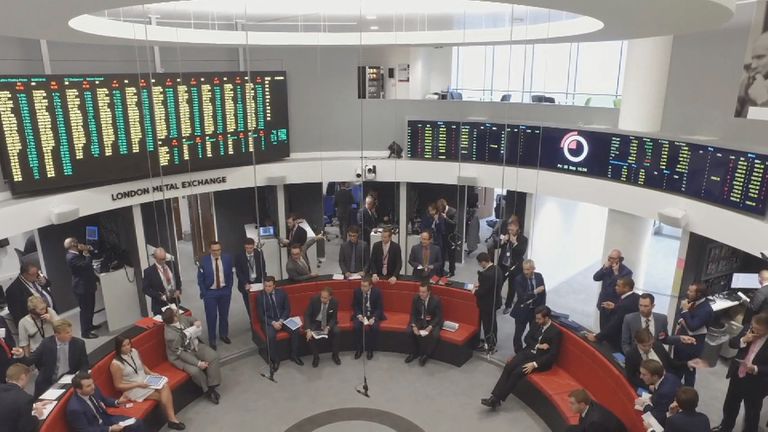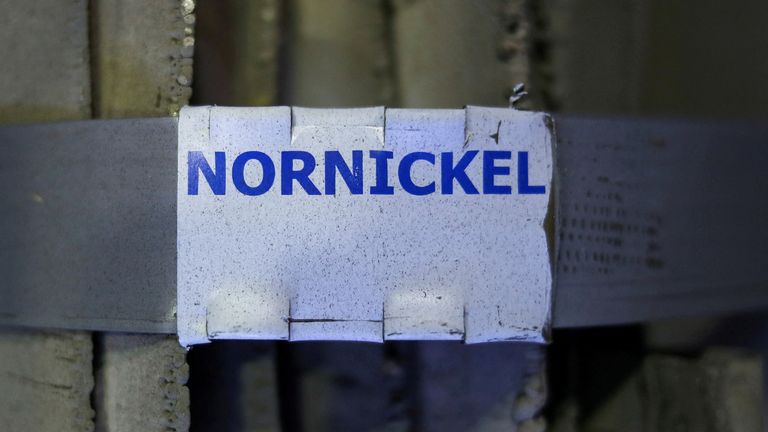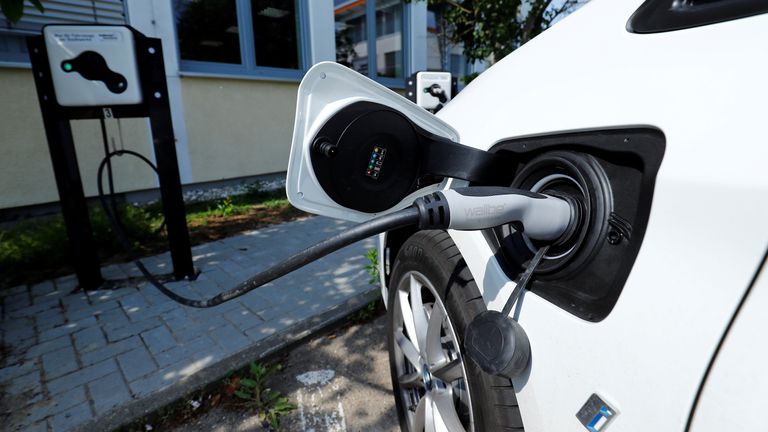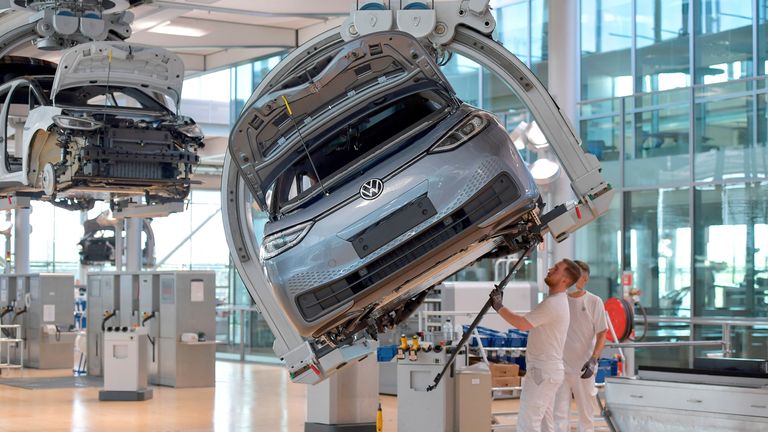Why nickel’s spectacular surge could put the brakes on carmakers’ electric plans
While many people – consumers and investors – focus on the impact on energy prices from Vladimir Putin’s invasion of Ukraine, the reaction has been just as violent in the prices of many other commodities.
The price of copper, just about the most important industrial metal hit an all-time high of $10,070 per tonne on the London Metal Exchange on Monday, while aluminium, another metal with wide industrial applications, also touched a record high.
Zinc, another widely-used metal, is also close to a record high.
No commodity, though, has moved as spectacularly as nickel.
The metal, which with its very high melting point has a wide range of applications including stainless steel, coins, wires, gas turbines and coatings, more than doubled in price today – obliging the London Metal Exchange to suspend trading in its benchmark three-month nickel contract.
Nickel, which at one point on Monday surged to a new record of $54,880 per tonne, climbed to a new peak of $101,365 before slipping back to $80,000 per tonne.
That is still four times the price at the beginning of the year.
It prompted the LME to step in, citing “further unprecedented overnight increases” in the three-month nickel price, which it said had evidently been effected by “the evolving situation in Russia and Ukraine”.
Russia is the world’s third biggest producer of nickel, after Indonesia and the Philippines, accounting for just under 10% of global production on its own.
The exchange added: “It is evident that this has affected the nickel market in particular, and given price moves in Asian hours this morning, the LME has taken this decision on orderly market grounds.
“The LME will actively plan for the reopening of the nickel market, and will announce the mechanics of this to the market as soon as possible.
“The LME will give consideration to a possible multi-day closure, given the geopolitical situation which underlies recent price moves.
“In this context, the LME will also make arrangements to deal with upcoming deliveries.”
The volatility in nickel during the last 24 hours is thought to be the result of a so-called “short squeeze” – where investors who had been speculating on a fall in the price were caught out by the earlier increases and were forced into suddenly buying nickel in order to close their positions.
Bloomberg reported today that the Chinese company Tsingshan Holding Group, the world’s largest nickel and stainless steel producer, was on the wrong end of the trade.
It said that Tsinghan’s owner Xiang Guangda, an entrepreneur nicknamed “Big Shot”, could be facing a potential $5bn hit.
John Meyer, head of research at the corporate advisory firm SP Angel, said in a note to clients this morning: “Reports from February suggested a single mystery stockpiler had amassed over 50% of all LME nickel inventories representing around 43,000 tonnes worth around $3.7bn at $85,000/tonne.
“Markets were already tight before Russia’s invasion of Ukraine, with forecasts of a 100,000 tonne deficit in 2022.”
The fear, then, will be that the price of nickel remains at elevated levels.
This is because, deprived of Russian supplies, buyers will have to source their nickel from elsewhere.
That threatens to have a profound impact on carmakers – which were already facing higher raw material and energy costs – and, in particular, on makers of electric vehicles.
While Russia is not the biggest producer of nickel globally, it is the biggest supplier worldwide of high-grade nickel, a key component in the manufacture of batteries for electric vehicles.
Nearly all of it is supplied by Norilsk Nickel, or Nornickel, which is Russia’s largest metals and mining company.
Nornickel, whose customers include Johnson Matthey, the FTSE-100 catalytic converter and sustainable technologies specialist, is estimated to account for up to 15% of global supplies of high-grade nickel.
German carmakers such as Volkswagen are expected to face specific issues because of their particular exposure to Russia, which accounts for 44% of German nickel imports, a third of its iron and 18% of its palladium, a metal central to the production of catalytic converters and in which Nornickel is a major global supplier.
All the German carmakers are also major customers of Leoni, a Ukrainian company that is one of the biggest suppliers globally of wiring harnesses, which bundle up to three miles worth of cables in the typical modern car and which are a key part of its electrical system.
VW has already warned that it can no longer obtain supplies from Ukraine and has had to suspend production at two German factories, including its most important electric vehicle facility in Dresden, putting more than 8,000 of its employees on furlough.
The spike in nickel prices, therefore, is not just a crisis hitting one corner of the metals market.
It also threatens to become a crisis engulfing those banks who have lent money to or acted as a broker to speculators caught on the wrong side of the trades.
And, of course, it is a huge headache for carmakers already still struggling in some parts of the world to obtain microchips.
It particularly threatens to hold up the manufacturing of electric vehicles and, by extension, the ability of European countries to hit their targets for the transition to net zero.






